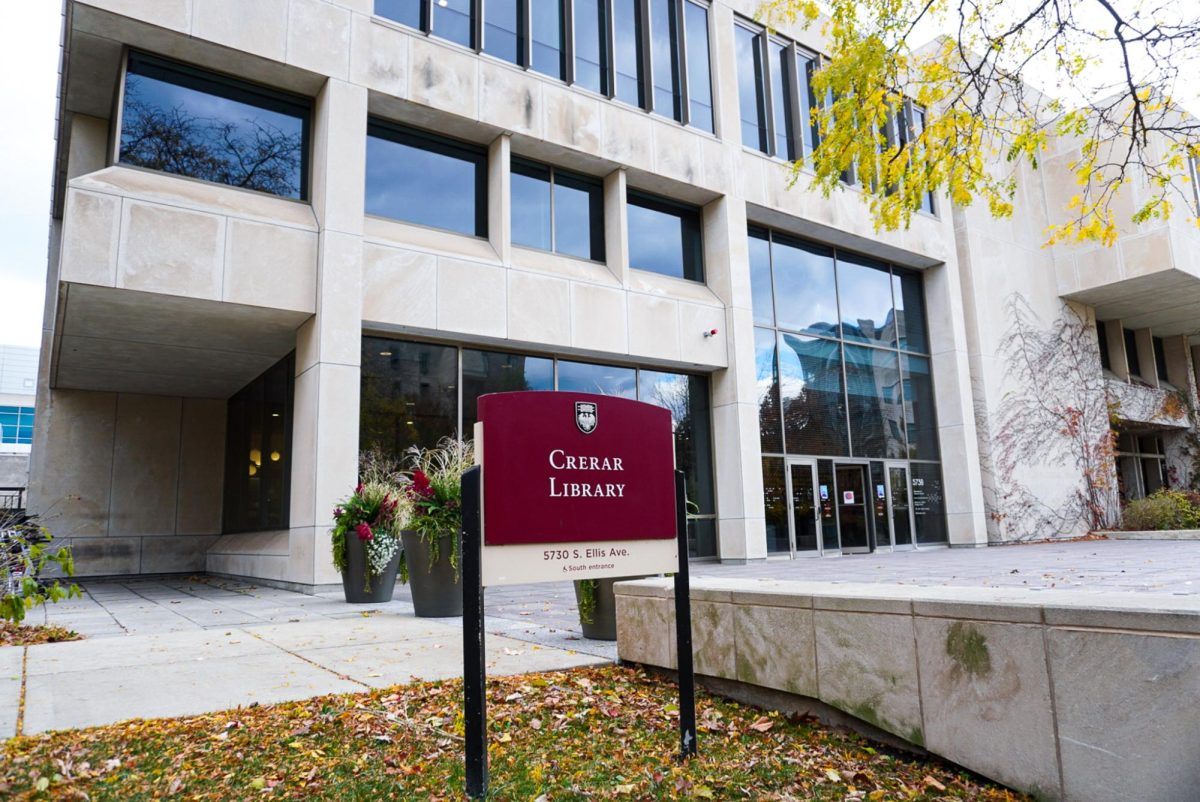Intro
In 2022, the University of Chicago embodied its commitment to halve its emissions by 2030 through the Greenhouse Gas Emissions Reduction Plan: Fiscal Year (FY) 2022 to FY2030, commonly known as the 2030 Plan. This plan aims to foster a more sustainable campus through initiatives including diverting waste from landfills, improving energy efficiency, and procuring renewable energy sources. However, key statements from University figures reveal a troubling rift between intention and execution: Dean of Students Michelle Rasmussen assures with casual confidence in an interview with the Phoenix Sustainability Initiative (PSI) that “the goal [of the 2030 Plan] has been publicly stated… It just is understood it has to happen,” while at the 2024 Sustainability Symposium, Sustainability Manager Sara Popenhagen states, “I think that we can [achieve the 2030 Plan]. I just think it’s going to take some more time.” This discrepancy casts doubt on the University’s ability to meet its environmental targets and raises concerns about the depth of its commitment. Asaf Lebovic ’25, a member of the Environmental Justice Task Force and PSI student-led organizations, critically observes, “I think below the surface the truer goal… is for the school to sign on to something that it doesn’t have to commit to… to show that is it engaging in ‘green activity’ without actually having to be committed to that ‘green activity.’” The closer University members are to the execution of the 2030 Plan, the less confident they are that its goals will be achieved. These doubts suggest that the 2030 Plan, in its current form, is structurally disorganized, compromising both its effectiveness and credibility. Such a scenario demands closer scrutiny and greater accountability from all stakeholders invested in the University’s sustainable future.
Background information
The 2030 Plan was announced in April 2022 and spearheaded by a team including Popenhagen and Assistant Vice President for Campus Planning & Sustainability Alicia Berg. The team was led by former Senior Director of Energy Services and Sustainability in Facilities Adam D’Ambrosio, who is no longer at the University.
The 2030 Plan is an expansion of a previous University goal to reduce carbon emissions by 20 percent by 2025. The new plan focuses on more drastically reducing both scope 1 and scope 2 emissions relative to the baseline fiscal years 2012 to 2014. Scope 1 emissions include direct sources, such as natural gas and fuel oil burned by the University, University-owned vehicles, and the nitrogen used in fertilizers on campus properties. Scope 2 emissions include indirect sources like electricity consumed by the University. The University also tracks its scope 3 emissions, which consist of directly financed air travel, financed automobile travel, solid waste, and electricity transmission losses. However, scope 3 emissions are not included in the emission reductions outlined in the 2030 Plan.
Expansion
Per the supplemental Greenhouse Gas Emissions Inventory, scope 1 and 2 absolute emissions increased by about 1 percent by the year 2023 compared to the baseline years. This increase coincided with a 17 percent expansion of campus area. This contention reveals a glaring paradox at the heart of the 2030 Plan: the University’s drive for expansion overshadows its pledged commitments to greenhouse gas reduction within the plan. Despite firm commitments to drastically reduce scope 1 and scope 2 emissions, both have had a net increase over the last decade. At the same time, the University has continued to grow its physical presence on the South Side. This expansion comes at a significant social cost: the displacement of Hyde Park and Woodlawn residents—especially low-income and working-class people of color—which exacerbates the social injustices associated with urban development.
Lebovic poignantly captures this issue, stating, “The University has a very long history of displacing Black people, displacing community members over and over again. And so it’s very scary to me that we’re prioritizing that continued expansion and the continued displacement of people on the South Side.” This history of displacement contextualizes a fundamental ethical conflict between the University’s research ambitions and its social responsibilities.
Some of the University’s current projects seek to expand its research capabilities, enabling UChicago to justify this growth with the notion that this research purportedly helps solve the climate crisis. However, buildings contribute to over 70 percent of the University’s absolute emissions as of FY2019, with 44.8 percent of absolute emissions coming from scope 2 emissions in buildings and 30.6 percent of absolute emissions coming from scope 1 emissions from buildings. Additionally, research buildings are often the largest consumers of energy on campus. In an interview with PSI, Berg notes, “Our laboratory buildings, our research buildings are our most energy intensive. I think it’s something like with 10 percent of the amount of space on campus, they utilize 38 percent of our energy.” When asked about the University’s conflicting expansion and emission reduction priorities, Popenhagen responded, “Some of the new buildings have to do with University research science, things that actually help us solve the climate crisis.” This juxtaposition of expansion for research and its environmental impact also reflects what is often presented as a complex balance, where the benefits of research are seen as ostensibly offsetting the costs of increased emissions. This framing creates a false dichotomy, suggesting that the University must choose between expansion and sustainability.
These goals should be complementary, with sustainable practices integrated into expansion efforts to ensure both research advancement and environmental responsibility. As Lebovic points out, the University’s current policy treats expansion as a goal unto itself: “It’s almost taken as implicit that we have to keep expanding even if that means abandoning the 2030 Plan.” This sentiment reflects a significant conflict between the University’s expansion initiatives and environmental commitments, underscoring misguided priorities that neglect the potential for realizing sustainable growth.
Financial restriction & underfunded and understaffed
Even as the University continues to undertake costly construction projects that expand its physical presence on the South Side, its financial struggles minimize the resources allocated to the 2030 Plan. The University acknowledges that its financial environment is a major factor inhibiting emissions reduction. Berg states, “I think that’s going to be a challenge moving forward, getting enough money to actually achieve a lot of the things that we’ve been planning.” If the University intends to achieve the targets established in the Plan, it needs to substantially increase its financial commitment to sustainability.
University students and faculty hold concerns that inaction on the sustainability front is propagated by the University’s property-focused acquisitive spending habits. As Maddie Brown ’26, member of the Environmental Justice Task Force and the Phoenix Sustainability Initiative, explains, “We might be reinforcing patterns of financial decision-making that got us into this mess in the first place,” explicitly discussing humanities Professor Clifford Ando’s report exposing the recent history of UChicago’s mismanaged investments through financial data analysis. She cites his writing when she recounts how “property decisions, building […], selling, and buying, probably did not reinforce the University’s good financial standing.” Once again, the focus on expansion as a primary goal has negatively impacted the feasibility of implementing the 2030 Plan. Significant adjustments in the University’s spending priorities are clearly necessary.
Moreover, the University’s financial situation leaves its own Office of Sustainability (OS) underfunded and understaffed, restricting the resources available to advance the 2030 Plan. While speaking about the OS in an interview with PSI, Dean of the College Melina Hale stated, “That’s a small office.” Popenhagen, along with Berg and another newly hired member, Maureen McMahon, are the only currently known leadership in the Office of Sustainability after D’Ambrosio’s departure. Chris Skrable, the executive director of Chicago Studies and experiential learning and assistant dean of the College isolates this issue, stating, “If you have a sustainability office of two or three people, and you have nine areas that you’re focusing on, that’s not really focused… I feel like that’s a formula for things staying the way they are.” Given the myriad of sustainability improvements possible around campus, the Office of Sustainability is critically understaffed. These personnel decisions have left the University in a position of complacency, rather than action, on the 2030 Plan.
Transparency
The administration’s ongoing failure to uphold the 2030 Plan coincides with its deliberate marginalization of student involvement. Elena Tiedens ’25 describes the vital role students played in the plan’s inception, stating, “I think a lot of people think of the 2030 Plan as a University-led initiative, but it was in a large part, driven by students.” Both undergraduate and graduate students (working together in the Campus and Community Engagement Working Group) participated in the formation of the plan and are credited in its original iteration. The 2030 Plan explicitly states that “information transparency provides an opportunity to increase engagement in sustainability on campus.” However, the University has consistently failed to incorporate student input in the execution phases of the plan.
Despite this, students have continued to show a keen interest in advancing the 2030 Plan. The administration’s lack of transparency, though, acted as a barrier to further student engagement. Ellen Ma ’25 expressed her frustration, noting, “We just didn’t hear many updates, [it was] very hard to find more information about the 2030 Plan because there weren’t many metrics laid out in the first place and not many progress updates.” Without progress updates, students cannot hold the University accountable to its own goals. Moreover, the publicly available information is difficult to access. The data on the University’s recent emissions are spread across numerous documents on multiple websites, and in many instances, the links to recent data are not functional. Lebovic echoes these issues, stating, “I think the very fact that these links were able to be down for such a long time… indicates to me that this is so low on the University’s priority list… And I think it’s revealing that [the 2030 Plan] is not something that the school is actively pursuing.”
Even beyond the University’s publicly stated commitments to engage with its stakeholders, we as students have a right to demand the University’s accountability regarding the 2030 Plan. Our tuition money contributes to the University and all of its functions, and we have a right to speak about how it is used. The plan was designed with and around student input. There is no reason we cannot be involved in it further. Finally, and perhaps most crucially, the 2030 Plan has impacts on our future well beyond our temporary time as students. The University’s emissions contribute to the ongoing climate crisis, a crisis that will follow us past our academic careers. Thus, as the University works to decrease its emissions in the coming years, we demand that students have a seat at the table.
Conclusion
At the University of Chicago, a clear discrepancy exists between the expressed commitment to sustainability and the tangible actions taken toward achieving it. Despite the urgent threats posed by climate change, crucial actions are continually postponed. The University responds to our demands with a “yes, but not now” attitude. With the 2030 Plan falling short of expectations, as evidenced by the lack of significant reductions in emissions and the expansion of campus infrastructure, it’s clear that a reevaluation of strategy is necessary. As Tiedens expresses, “the University is not on track to meet the 2030 plan… as is the case with many sustainability agreements, commitment should be followed with tangible action and progress.” The need for immediate and effective action is clear: the time and place to address climate change is always here and now. We must ensure that our declarations of intent are matched by a true commitment to substantial and lasting environmental actions.
Seri Welsh, Nyah Lues, Zachary Kratzer, Izzi Solomon, and Andre Ballo comprise the Phoenix Sustainability Initiative’s Community Action Project Group.












